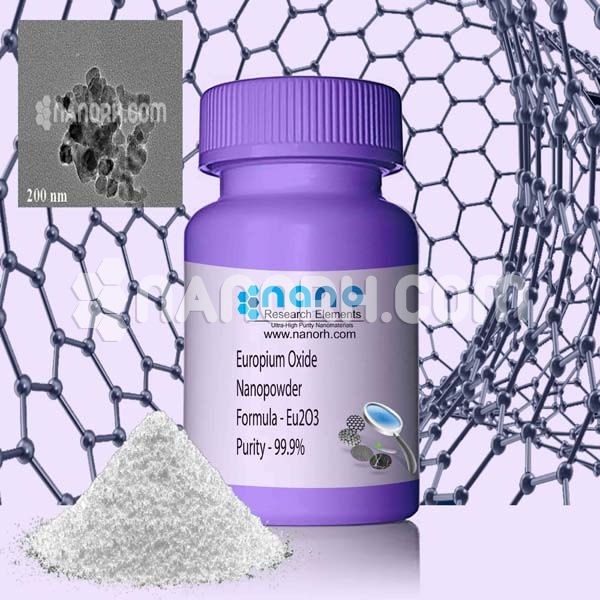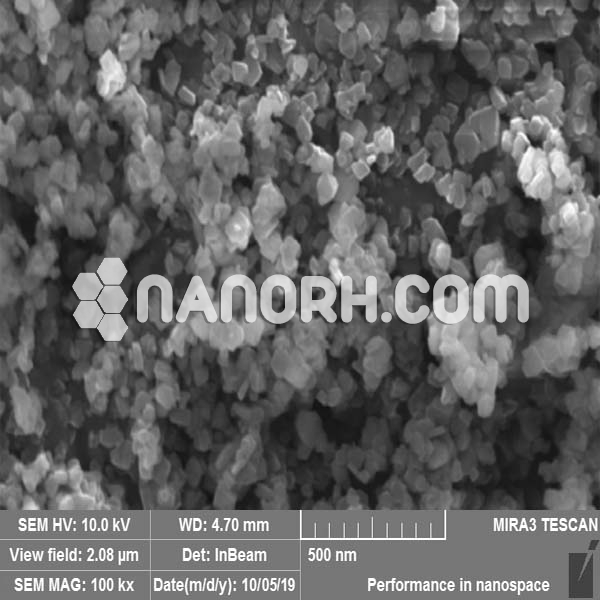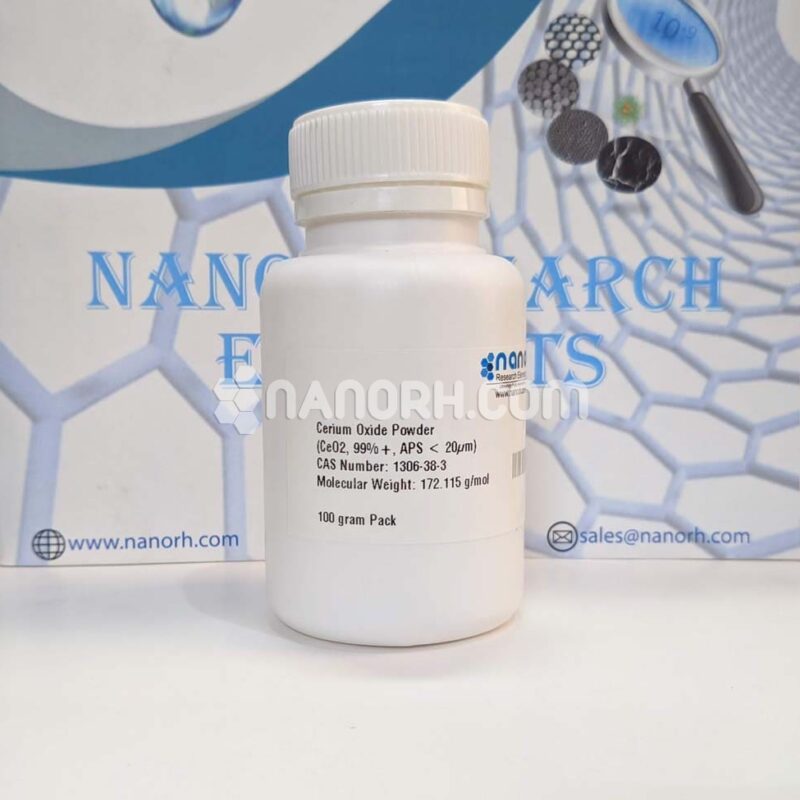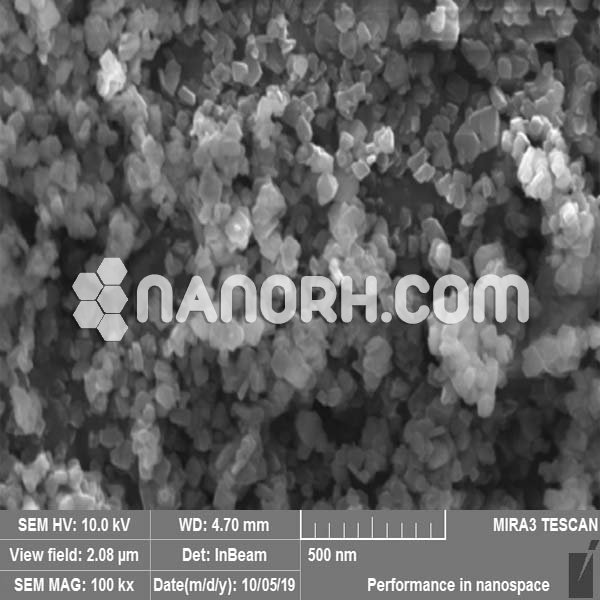| Europium Oxide Nanoparticles | |
| Product No | NRE-3019 |
| CAS No. | 1308-96-9 |
| Formula | Eu2O3 |
| APS | <100nm (Can be Customized) |
| Purity | 99.9% |
| Color | white |
| Molecular Weight | 351.9262 g/mol |
| Density | 7.42 g/cm3 |
| Melting Point | 2350 °C |
| Boiling Point | 4118°C |
Europium Oxide Nanoparticles
- Glass production This material is used in the production of some special glasses, in particular, those for use in lamps or with phosphorescent properties.
Lighting. The europium oxide can be used as a phosphor for lamps and other lights. The same fluorescent property is also used for some watermarks and anti-counterfeiting measures, such as those found in euro banknotes.
Sample In color televisions and other color displays, europium oxide particles can be used as high-efficiency luminescent. It is also particularly useful in producing red for some screens.
Sintering and doping. Like many materials oxides, europium oxide particles are particularly useful in sintering, doping, and various related processes.
Production of material When combined with certain acids, europium oxide particles are an effective way to produce different compounds of europium salts. - Europium(III) oxide (Eu2O3), is a synthetic compound of europium and oxygen. It is broadly utilized as a red or blue phosphor in TVs and fluorescent lights, and as an activator for yttrium-based phosphors. It is likewise an operator for the production of fluorescent glass. Europium fluorescence is utilized as a part of the counter duplicating phosphors in Euro banknotes. It can respond with acids to shape the comparing europium(III) salts. Dopants; Fluorescent powder of high-weight mercury knot; High-effectiveness luminescent materials (for level board shows); Red powder initiation of shading TV; Sintering help.




